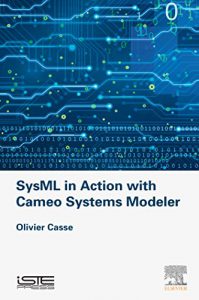SysML
The Systems Engineering community wanted to define a common modeling language adapted to its problematic, as UML has become for computer scientists. This new language, named SysML, is strongly inspired by version 2 of UML, but adds the possibility of representing system requirements, non-software elements (mechanical, hydraulic, sensors …), physical equations, continuous flows (matter, energy, etc.) and allocations.
The OMG announced the adoption of SysML in July 2006 and the availability of the first official version (SysML 1.0) in September 2007. Since then, four minor revisions have been published, SysML 1.5 being the current version at present ( www.omgsysml.org/).
SysML is organized around nine types of diagrams, which OMG has divided into three main groups:
The first group includes four behavioral diagrams:
- activity diagram (shows the sequence of actions and decisions within a complex activity);
- sequence diagram (shows the vertical sequence of messages passed between blocks within an interaction);
- state diagram (shows the different states and possible transitions of the dynamic blocks);
- use case diagram (shows the functional interactions between the external elements and the system under study).
The second group contains a single transverse diagram: the requirements diagram (shows system requirements and their relationships).
The third group includes four structural diagrams:
- block definition diagram (shows the basic static building blocks: blocks, compositions, associations, values, operations, generalizations …);
- internal block diagram (shows the internal organization of a complex static element, in terms of parts, ports, connectors …);
- parametric diagram (represents the constraints of the system, the equations that govern it);
- package diagram (shows the logical organization of the model and the relationships between packages).
Discover SysML trainings by PRFC
> SysML in action with CSM
This hands-on training will introduce you to the ins and outs of SysML, the modeling language for system engineering, and explain how to use it on a case study with Cameo Systems Modeler.
> MBSE with SysML
This introductory course will allow you to discover the ins and outs of SysML, the modeling language for system engineering, and the benefits of MBSE.


